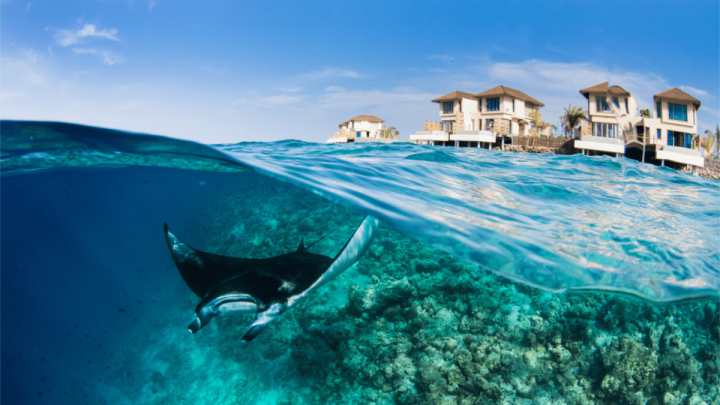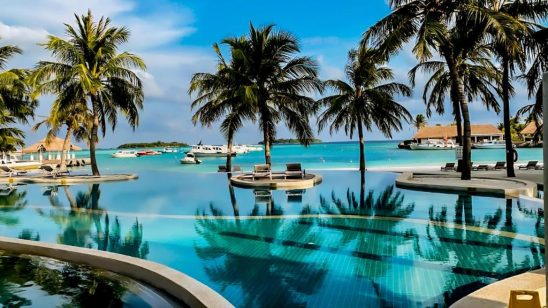
InterContinental Maldives Resort’s lagoon declared critical habitat for manta rays
The lagoon at InterContinental Maldives Maamunagau Resort, along with Maamunagau and Fenfushi, has officially been recognised as an Important Shark & Ray Area (ISRA).
This recognition follows the resort’s ongoing collaboration with the Manta Trust, a leading global manta ray research and conservation organisation. Extensive research conducted by the on-site team has contributed to this achievement, granting the lagoon international recognition as a vital habitat for manta rays and a priority for conservation efforts. Years of scientific research and data collection, supported by the resort, have led to this designation, marking a step toward implementing protective measures in the surrounding area. This announcement is also part of the Manta Trust’s broader efforts to establish the area as a Marine Protected Area (MPA).
InterContinental Maldives first partnered with the Manta Trust in 2019, recognising the unique opportunity of being located near a newly discovered juvenile reef manta ray feeding ground. The resort’s surrounding waters are home to a large and thriving population of reef manta rays, providing Manta Trust researchers with an unparalleled chance to study these magnificent creatures.
In addition to the Maamunagau lagoon, several other nearby locations have also been designated as ISRAs: Dhikkuredhoo & Madivaafaru, approximately 30 minutes from the resort and popular for snorkelling with mantas (where visitors can witness mass feeding events between June and November), as well as Vandhoo & Kottefaru.
Jess Haines, a PhD Researcher with The Manta Trust, expressed her excitement over the achievement: “It’s a fantastic milestone to have multiple areas in Raa Atoll designated as Important Shark and Ray Areas (ISRAs). This accomplishment reflects the value of Manta Trust’s data collection, which wouldn’t have been possible without the resort’s support. I look forward to using the data in my PhD research to produce important findings and continue working to protect these critical marine habitats for young manta rays.”





